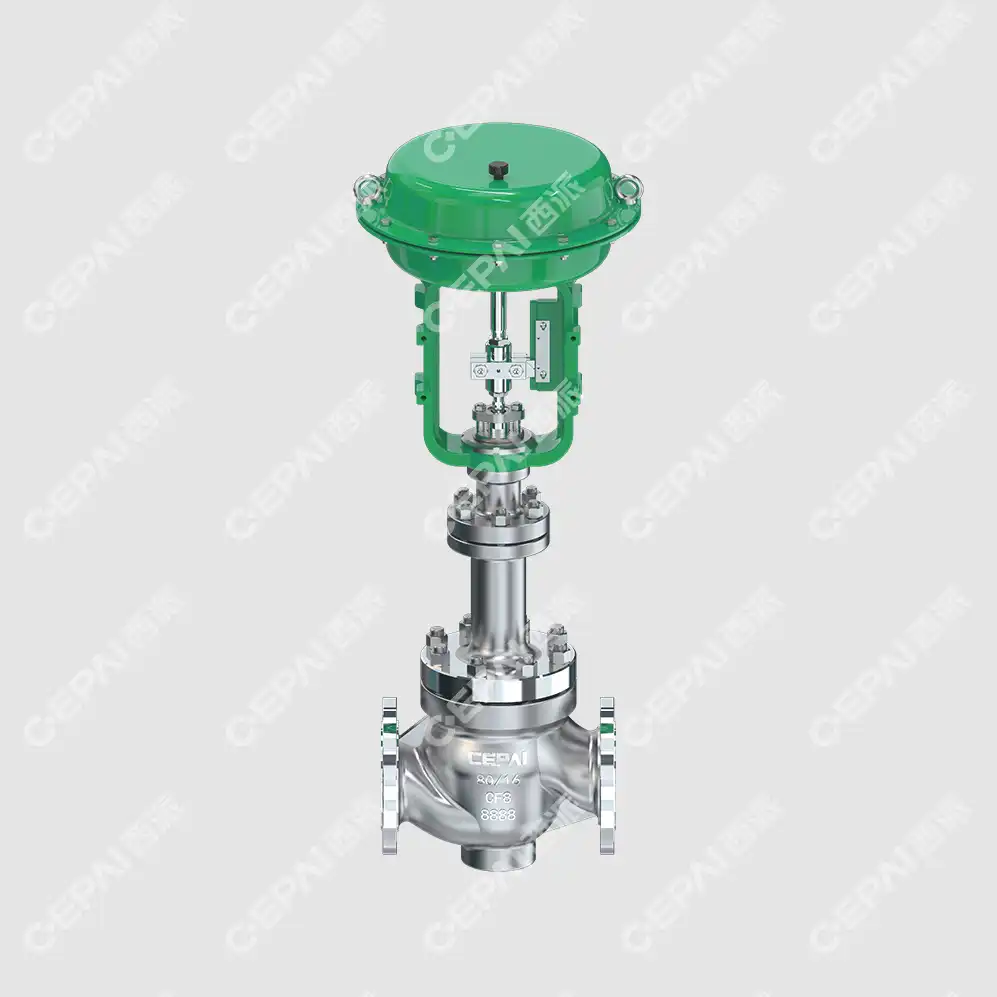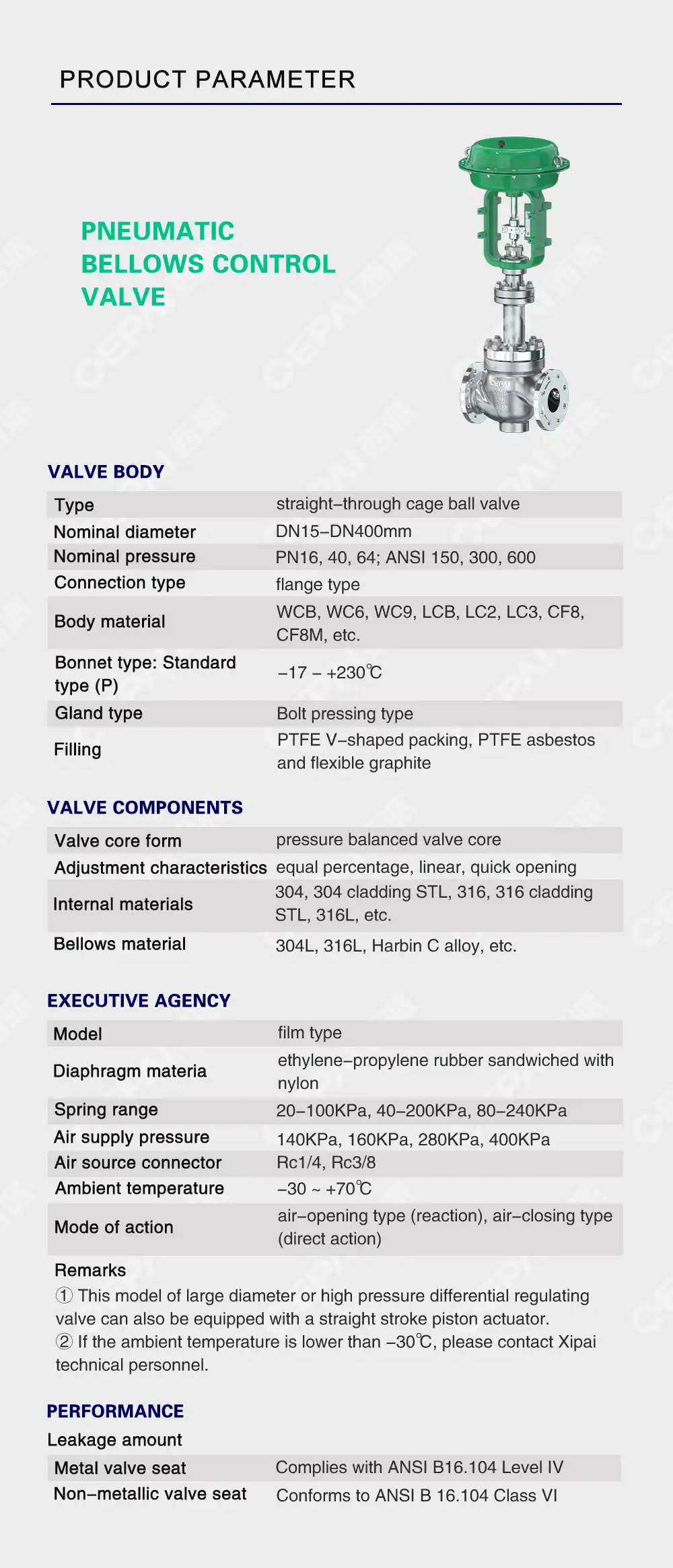Understanding the Anatomy of a Bellow Valve
Key Components of a Bellow Valve
Bellow valves consist of several essential components that work together to provide reliable fluid control. The main parts include the valve body, which houses the internal mechanisms and connects to the piping system. Within the body, you'll find the bellows assembly, typically made of stainless steel or other corrosion-resistant materials. This flexible, cylindrical component is the heart of the valve's functionality. The stem, connected to the bellows, moves up and down to control fluid flow. A bonnet covers the top of the valve, protecting the internal parts and providing access for maintenance. The seat and plug work in tandem to create a seal when the valve is closed, with the plug attached to the lower end of the stem.
Materials Used in Bellow Valve Construction
The choice of materials for bellows control valves is critical to their performance and longevity. The valve body is often constructed from durable metals like carbon steel, stainless steel, or alloy steel, depending on the specific application requirements. For the bellows itself, manufacturers typically use high-grade stainless steel, such as 316L or 321, known for their excellent corrosion resistance and ability to withstand repeated flexing. In some cases, exotic alloys like Hastelloy or Inconel may be employed for extremely corrosive environments. The stem and plug are usually made from hardened stainless steel or stellite-coated materials to resist wear and ensure a tight seal. Gaskets and seals within the valve are crafted from advanced polymers or elastomers capable of withstanding high temperatures and pressures.
Design Variations of Bellow Valves
Bellow valves come in various designs to suit different industrial needs. The most common type is the globe-style bellow valve, which offers excellent flow control characteristics. Another variation is the angle-style bellow valve, ideal for applications where space is limited or where a change in flow direction is required. Some designs incorporate a backup packing system as an additional safeguard against leaks. For high-pressure applications, multi-ply bellows constructions are available, providing enhanced strength and flexibility. Specialized bellow valves may also feature extended bonnets for use in extreme temperature environments, allowing the bellows to remain at a more moderate temperature. Additionally, some manufacturers offer bellow valves with pneumatic or electric actuators for remote operation in complex systems.
The Mechanism Behind Bellow Valve Operation
Principle of Bellows Movement
The operation of a bellow valve hinges on the unique properties of its bellows component. When the valve stem moves, it causes the bellows to either extend or compress, much like an accordion. This movement is achieved through the application of force, typically from a handwheel in manual valves or an actuator in automated systems. As the bellows extends, it pushes the plug away from the seat, opening the valve and allowing fluid to flow. Conversely, when the bellows compresses, it pulls the plug towards the seat, gradually restricting and eventually stopping the flow. The bellows' flexibility allows for smooth, precise control over the valve's position, enabling fine-tuned regulation of flow rates.
Sealing Mechanism and Leak Prevention
One of the primary advantages of bellows control valves is their superior sealing capability. The bellows acts as a barrier between the valve stem and the process fluid, effectively eliminating the need for traditional packing materials around the stem. This design significantly reduces the risk of leaks, particularly in high-pressure or high-temperature environments where conventional packing materials might fail. The bellows provides a hermetic seal, preventing any escape of process fluids or ingress of external contaminants. Additionally, the flexible nature of the bellows allows it to absorb thermal expansion and contraction, maintaining a tight seal even under changing temperature conditions. This makes bellow valves particularly valuable in applications where fugitive emissions must be minimized or where handling toxic or expensive fluids is involved.
Flow Control and Pressure Regulation
Bellow valves excel in applications requiring precise flow control and pressure regulation. The design allows for very fine adjustments to the valve opening, enabling operators to achieve exact flow rates as needed. This level of control is particularly beneficial in processes where maintaining specific pressures or flow rates is critical to the overall system performance. The bellows component also helps to balance the forces acting on the valve plug, reducing the operating force required and improving control stability. In throttling applications, where the valve is partially open to regulate flow, bellow valves can provide smooth, linear control characteristics. Some advanced bellow valve designs incorporate special trim options, such as characterized plugs or multi-stage pressure reduction cages, to further enhance their flow control capabilities across a wide range of operating conditions.
Applications and Advantages of Bellow Valves
Industries Benefiting from Bellow Valve Technology
Bellow valves find extensive use across various industries due to their unique capabilities. In the oil and gas sector, these valves are crucial for wellhead control, pipeline regulation, and processing plant operations. The chemical industry relies on bellow valves for handling corrosive substances and maintaining precise control in reaction processes. Power generation plants employ these valves in steam systems and feedwater control applications, where high temperatures and pressures are common. In the pharmaceutical industry, bellow valves are valued for their ability to maintain sterile conditions and prevent contamination. The nuclear power industry also utilizes bellow valves in critical systems where leak-tight operation is paramount. Additionally, bellow valves play important roles in cryogenic applications, such as in the production and handling of liquefied natural gas, where extreme low temperatures pose unique challenges.
Comparative Advantages Over Traditional Valve Types
When compared to traditional valve designs, bellows control valves offer several distinct advantages. Their superior sealing capabilities result in significantly reduced fugitive emissions, making them an environmentally friendly choice and helping companies comply with stringent regulations. The elimination of traditional packing materials leads to lower maintenance requirements and extended service life, reducing overall operational costs. Bellow valves provide excellent performance in high-cycle applications, where frequent opening and closing could quickly wear out conventional valves. Their ability to handle thermal cycling without losing seal integrity makes them ideal for processes with fluctuating temperatures. In terms of control, bellow valves often offer more precise and stable regulation compared to globe or gate valves, especially in low-flow scenarios. The compact design of many bellow valve models also allows for easier installation in space-constrained environments.

Maintenance and Longevity Considerations
While bellow valves offer numerous benefits, proper maintenance is key to ensuring their long-term performance and reliability. Regular inspection of the bellows for signs of fatigue or damage is essential, as this component is critical to the valve's function. Fortunately, the design of bellow valves often allows for easier visual inspection compared to other valve types. Periodic testing of valve seat tightness and stem movement helps identify potential issues before they lead to failures. In many cases, the elimination of traditional packing means fewer adjustment requirements during operation. When maintenance is necessary, many bellow valve designs allow for in-line servicing, reducing downtime. The materials used in modern bellow valves, such as high-grade stainless steels and advanced alloys, contribute to their longevity, often allowing them to outlast conventional valves in challenging environments. Proper selection of valve specifications based on the specific application requirements is crucial for maximizing the lifespan and performance of bellow valves.
Conclusion
Bellows control valves represent a significant advancement in valve technology, offering unique benefits in fluid control and system integrity. Their innovative design, incorporating a flexible bellows component, provides superior sealing, precise regulation, and enhanced durability in challenging industrial environments. From oil and gas operations to chemical processing and power generation, bellow valves have proven their worth across various sectors. As industries continue to demand higher performance, reliability, and environmental compliance, the role of bellow valves in modern fluid handling systems is likely to grow. Understanding the mechanics, applications, and advantages of these valves is crucial for engineers and operators seeking to optimize their processes and equipment selections.
Contact Us
For cutting-edge bellow valve solutions tailored to your specific industrial needs, turn to CEPAI Group. Our advanced valve technology ensures precise control, superior leak prevention, and long-lasting performance, even in the most demanding applications. Experience the benefits of our expertly engineered bellow valves and elevate your fluid handling capabilities. Contact us today at cepai@cepai.com to discuss how our products can enhance your operations.






